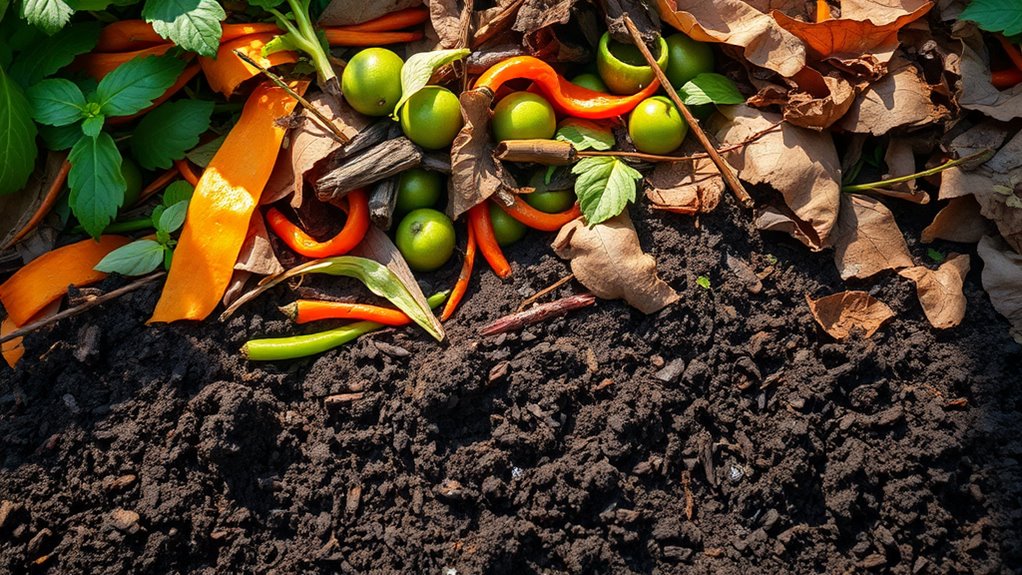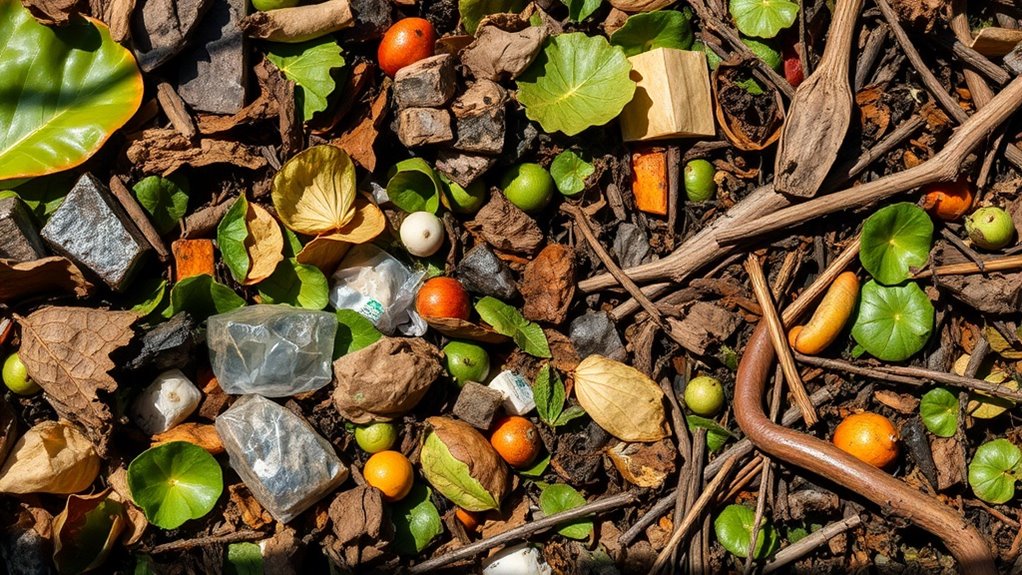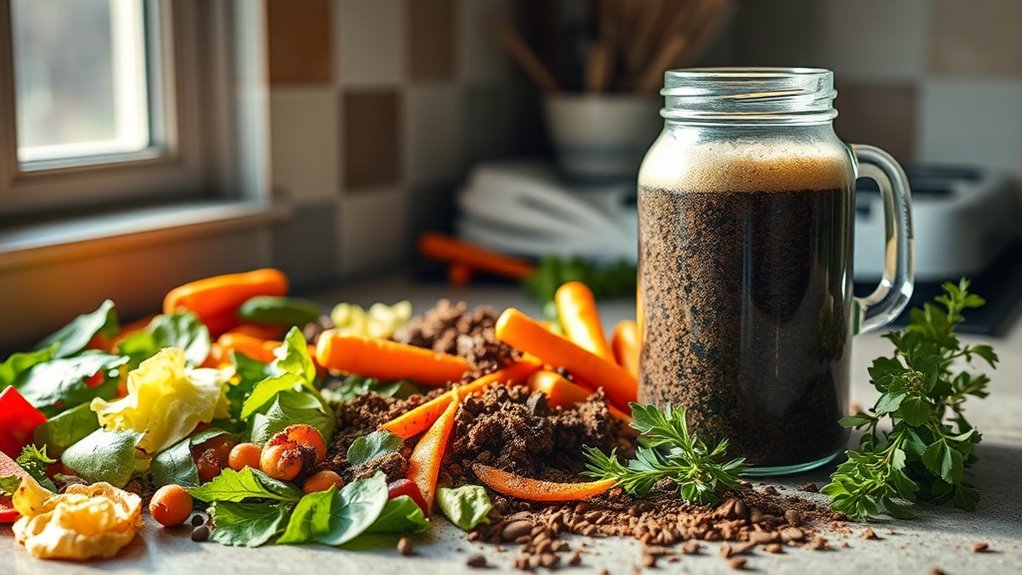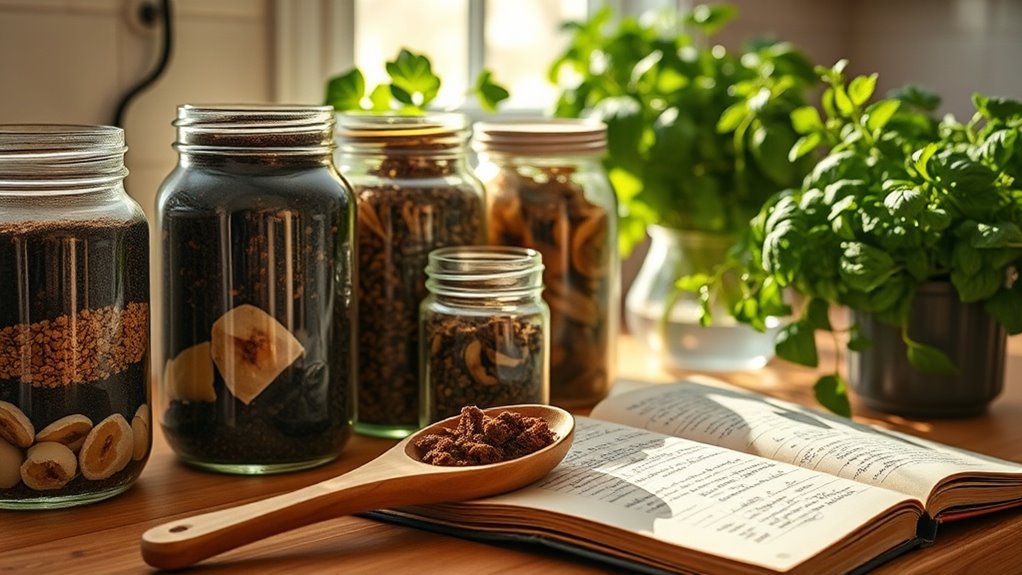What I Put in My Compost Pile for Maximum Growth
When it comes to nurturing your compost pile, it’s all about creating the right balance. By carefully selecting what to include, you can enhance the decomposition process and enrich your soil. From kitchen scraps to yard waste, each component plays a critical role. Let’s explore how you can effectively combine green and brown materials, along with some beneficial additives that make a real difference. What might be key to achieving that optimal carbon-to-nitrogen ratio?
Kitchen Scraps
Kitchen scraps are a vital component of an effective compost pile, as they provide essential nutrients that enrich the soil.
You should include a variety of compost materials like fruit peels, vegetable trimmings, and coffee grounds. Avoid fatty foods and dairy, as they can attract pests. Additionally, incorporating green materials into your compost can help balance the nitrogen content for faster decomposition.
Yard Waste
Yard waste is a crucial addition to your compost pile, as it contributes carbon-rich materials that balance out the nitrogen from kitchen scraps. Incorporating items like leaves, grass clippings, and small branches enhances microbial activity and decomposition speed. Additionally, maintaining an odor-free composting environment is essential to ensure that your composting process remains efficient and pleasant.
| Material | Carbon-to-Nitrogen Ratio |
|---|---|
| Dried leaves | 30:1 |
| Grass clippings | 20:1 |
| Small branches | 50:1 |
Green Materials
While you focus on creating an effective compost pile, integrating green materials is essential for providing the nitrogen that fuels microbial activity and accelerates decomposition. Include kitchen scraps like fruit and vegetable peels, grass clippings, and coffee grounds. These items add vital nutrients and moisture, promoting faster breakdown. In addition, incorporating common household items can further enhance your compost composition. Balance your greens with browns for optimal results, ensuring a healthy composting environment.
Brown Materials
To create a balanced compost pile, you need to incorporate brown materials, which provide essential carbon that complements the nitrogen from green materials.
Examples of brown materials include dry leaves, straw, cardboard, and wood chips. Aim for a carbon-to-nitrogen ratio of about 30:1.
Shredding these materials increases surface area, accelerating decomposition and enhancing nutrient availability for your compost pile.
Additional Additives
In addition to brown and green materials, incorporating additional additives can significantly boost your compost pile’s effectiveness. Consider including items like eggshells for calcium, coffee grounds for nitrogen, and wood ash to balance pH levels. These additives enrich your compost, enhancing its nutrient profile and promoting microbial activity. Moreover, eggshells not only provide a calcium source but also add other trace minerals that can benefit your plants.
| Additive | Benefits | Application |
|---|---|---|
| Eggshells | Calcium source | Crushed, mix in |
| Coffee Grounds | Nitrogen booster | Layer, mix well |
| Wood Ash | pH balance | Light sprinkle |
What to Avoid
Avoiding certain materials in your compost pile is essential for its success. Stay clear of meats, dairy, and oils, as they can attract pests and create odors.
Avoid treated wood, coal ash, and diseased plants, which can introduce harmful chemicals or pathogens.
Also, skip glossy paper and plastics, as they don’t break down and contaminate your compost.
Focus on organic, plant-based materials for optimal results.





